The following is an excerpt from Reopening the World: How to Save Lives and Livelihoods, a new report where Brookings experts offer ideas to help policymakers protect lives and save livelihoods in the midst of the current COVID-19 pandemic.
 By early May, the United Kingdom achieved the dubious distinction of surpassing Italy to have the highest death toll in Europe from the novel coronavirus. Its losses were second globally to the United States, which has a population five times greater. Surveys suggested the British were among the most pro-lockdown in the world, more reluctant to reopen businesses before the virus was fully contained than people in similarly affected countries.
By early May, the United Kingdom achieved the dubious distinction of surpassing Italy to have the highest death toll in Europe from the novel coronavirus. Its losses were second globally to the United States, which has a population five times greater. Surveys suggested the British were among the most pro-lockdown in the world, more reluctant to reopen businesses before the virus was fully contained than people in similarly affected countries.
Favorability ratings for Prime Minister Boris Johnson, who was slow to implement a lockdown then nearly died from the virus himself, were initially high. However, his efforts to reopen the country on May 10 were marked by mixed messages and public skepticism. Public support for Johnson plummeted 20 points and backing for his government fell 16 points over the late May holiday weekend, after news emerged that Dominic Cummings — Johnson’s controversial advisor who spearheaded the Brexit campaign and guided the COVID-19 response — had flouted lockdown rules by driving his wife and son 260 miles for childcare assistance from relatives after his wife became ill.
Britain’s reopening was also marked by significant regional variation. Responsibility for major public services (such as health and education) are devolved to governments in Scotland, Wales, and Northern Ireland — all of which declined to follow Johnson’s guidance for England.
SLOW START
The U.K. lagged behind its continental neighbors in introducing measures to slow the spread of the coronavirus, leading critics to blame the government for doing too little too late. Johnson relied on scientific advisors, who recommended against beginning social distancing measures too quickly lest people become fatigued and advocated “herd immunity” (though one advisor later denied this was the strategy). On March 12, Johnson announced a move from the “contain” to the “delay” phase. He advised anyone feeling unwell to stay home, people over 70 to avoid cruises, and students not to travel abroad. However, he did not shut schools or ban large gatherings. Hours after Scotland and Wales closed schools on March 18, Johnson announced their shuttering in England; Northern Ireland soon followed. On March 23, Johnson introduced a national lockdown that prevented people from leaving home for anything other than essential work, medical care, grocery shopping, and once-daily exercise.
The U.K. lagged behind its continental neighbors in introducing measures to slow the spread of the coronavirus, leading critics to blame the government for doing too little too late.
THE PRIME MINISTER’S NEAR DEATH
Four days later, Johnson said he had tested positive for the coronavirus. His health secretary, chief medical officer, and other senior officials (including Cummings) also fell ill. Johnson was hospitalized for a week, including three nights in intensive care on oxygen. There was widespread goodwill for the prime minister during his illness, despite some head shaking over his boast several weeks earlier about shaking hands with hospitalized COVID-19 patients. British institutions calmly carried on, as Foreign Secretary Dominic Raab temporarily filled in for Johnson, Queen Elizabeth II rallied the nation in a televised message, and the Labour Party elected a capable new leader. The prime minister was released from the hospital on April 12.
Two weeks later, his fiancée — who suffered her own bout of coronavirus — gave birth to their first child.
REOPENING PLANS
Johnson’s near-death experience made him more sober about the seriousness of the virus. Yet he is a libertarian by nature, having lamented that restrictions were “taking away the ancient, inalienable right of free-born people of the United Kingdom to go to the pub.” He also faced pressure from some Conservative Party members, who warned about the financial consequences of the closures. Chancellor Rishi Sunak said in mid-May it is “very likely” the U.K. is already in a “significant recession,” as the economy had contracted at the fastest pace since the 2008 financial crisis. The Bank of England warned it could shrink by 14 percent this year. Nearly 2 million people have applied for unemployment benefits, a six–fold increase from normal rates. The British government was quick to implement economic measures in mid-March, including a $38 billion fiscal stimulus to provide welfare and business support.
On May 10, Johnson offered general parameters for reopening the country in a televised address. The following day, his government published a 60- page recovery strategy, which he discussed with a “virtual parliament.” During the intervening 24 hours, there was widespread confusion about the guidance. A snap YouGov poll during this period found only 44 percent of respondents wanted restrictions eased while 43 percent were opposed, with Conservative voters twice as likely to support lifting them (61 percent) as Liberal Democrats (37 percent) and Labour voters (32 percent). There was particular criticism of the government’s decision to replace its initial message (“stay home, protect the NHS [National Health Service], save lives”) with a muddled one (“stay alert, control the virus, save lives”). Although 91 percent of those polled felt the first one was clear, only 30 percent said they understood the new one. Critics also lamented the lack of specific instructions, with Johnson repeatedly telling legislators that the public should rely on “good, solid, British common sense.” Days later, a YouGov poll showed those who believed the government was handling the crisis well dropped below 50 percent for the first time.
The reopening rules, which only applied to England, followed a phased approach. From May 13, those able to work from home should continue to do so; those who cannot (including workers in manufacturing, logistics, scientific research, and food production) were “actively encouraged” to return to their jobs with appropriate safety measures. The government recommended wearing masks when taking public transportation or shopping. People were allowed to leave home to exercise for an unlimited period of time and meet one person from a different household in public. Travelers from abroad are required to self-isolate for 14 days, with the exception of Ireland (given the shared border with Northern Ireland). In late May, Johnson announced that schools could begin a phased re-opening on June 1 and non-essential shops could resume business on June 15. Bars, restaurants, hair salons, and cinemas may reopen after July 4, if infection rates have not increased.
The government created a new monitoring system. “COVID-19 Alert Level,” a 1-to-5 grading system like the terror threat level, will use input from a new joint biosecurity center to determine the pace of reopening. In addition, five ministerial taskforces are looking at pubs and restaurants, non-essential retail, recreation and leisure (such as tourism, libraries, sport, worship), and air travel. The government’s plans depend on keeping the reproduction number (how many people the average infected person infects) below 1, yet critics noted the U.K. struggled to develop large-scale testing and numbers vary widely across the country.
REGIONAL VARIATION
Britain’s constituent nations and regions coordinated their shutdown responses, including the creation of a U.K.-wide action plan in early March and similar messaging about restrictions later that month. Yet the devolved administrations opted not to follow Johnson’s reopening guidance, leading to variable rules across the country and charges that he had become prime minister of England only.
Scotland: First Minister Nicola Sturgeon criticized Johnson for retiring “stay home” as the official message. She said adopting the same strategy in Scotland would be playing “Russian roulette” with people’s lives, given “the risk of the virus potentially running out of control again.” She extended the lockdown until May 28, encouraging Scots via Twitter to “Please continue to #StayAtHome.” In late May, Sturgeon announced a relaxation of restrictions; this included the reopening of garden centers, outdoor cafes, and drive-through restaurants as well as permission to visit parks and meet friends outdoors. Nonessential shops, pubs, and restaurants will remain closed for at least three more weeks, with no set reopening date. Schools will open in mid-August with a “blended model” of regular and online learning.
Wales: First Minister Mark Drakeford noted “some differences in the messaging between England and Wales which I am concerned may cause confusion,” encouraging people to “please continue to stay at home.” Although Wales has not yet reopened the economy, it passed a law requiring employers to ensure workers can stay six feet apart. Garden centers can reopen, people can exercise outside more than once a day, but gatherings in public places remain prohibited. Drakeford said he has not seen sufficient evidence to require masks. The government planned to announce further changes in late May. Schools will not open in early June.
Northern Ireland: The region, which shares a border with the Republic of Ireland, has faced political strains from differing approaches by the British and Irish governments. Although hardline unionist politicians eschewed differences during Brexit debates, First Minister Arlene Foster acknowledged “slight differences” in Northern Ireland’s position and said its moves would be “nuanced.” The power-sharing government retained the Stay Home slogan. It published a five–stage plan for easing lockdown, though without a timetable. The first step included re-opening places of worship for private prayer, “drive–through church services,” and permission for four to six people who do not share the same household to gather outside at an appropriate distance. Those unable to work from home were allowed to return on a phased basis if infection rates remain low. Schools will remain closed until September. The government is creating its own contact tracing app, which will be compatible with a version being developed in Ireland.
English regions: Although England does not have a regional assembly, some local leaders raised concerns about Johnson’s approach. The mayors of Manchester and Liverpool sent him a letter, which warned that removing the “Stay Home” message was premature in the badly affected northwest and called for reproduction numbers to include local breakdowns.
BREXIT IMPLICATIONS
Despite the coronavirus, Brexit looms large. When the U.K. left the EU on January 31, it began an 11-month transition period. During this time, the two sides planned to determine their future relationship, including a free trade agreement. The outbreak of COVID-19 hampered talks, given social distancing restrictions and ill negotiators. When the third round resumed via videoconference in mid-May, significant gaps remained. Either side could ask to extend the transition period by one to two years. Polling shows over two-thirds of Britons support an extension, which would allow the government to focus on the pandemic. Yet Johnson has long opposed remaining bound by EU rules and financial obligations longer than necessary. In the days after this negotiating round, British civil servants detailed to work on the coronavirus returned to no-deal planning. Although leaving the EU without a trade deal would create an economic shock, some argue its effects would be masked by the coronavirus–induced recession. Time is short, as any extension must be agreed before July 1.
CONCLUSION
Five months after Boris Johnson won a decisive election with a pledge to “get Brexit done,” thousands of citizens have lost their lives to COVID-19, the economy is in recession, devolved governments rejected his initial reopening plans, and post-Brexit arrangements are far from done. Although he planned to remake the U.K.’s relationship with Europe, he must now remake Britain itself after the pandemic. The challenge of reunifying a country polarized by Brexit could become even harder if Cummings retains his position and regional divergences over the coronavirus continue. Johnson’s decisions in the coming months will be critical to Britain’s health and economy, as well as its domestic unity and foreign relations.




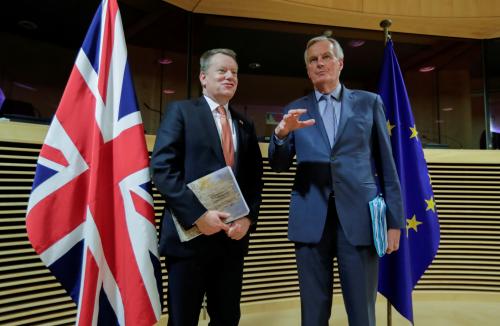
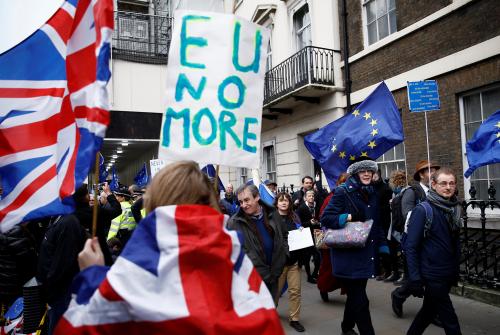

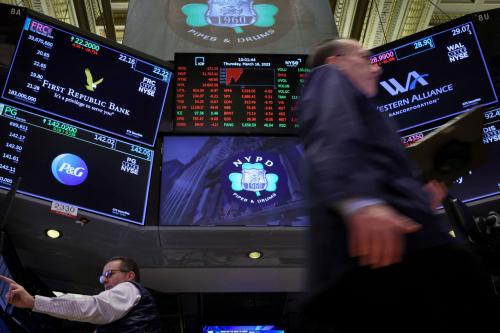
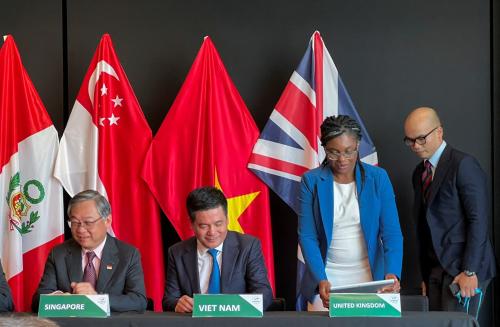
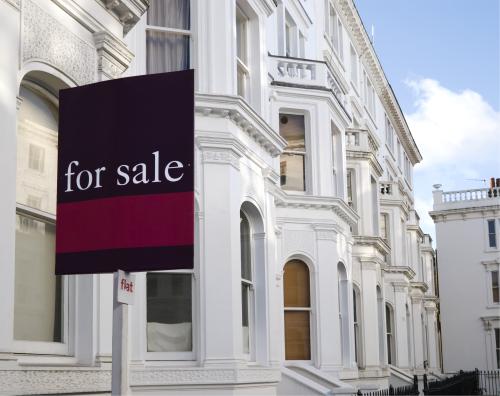
Commentary
Reopening the World: Britain bungled its lockdown and garbled its reopening
June 16, 2020